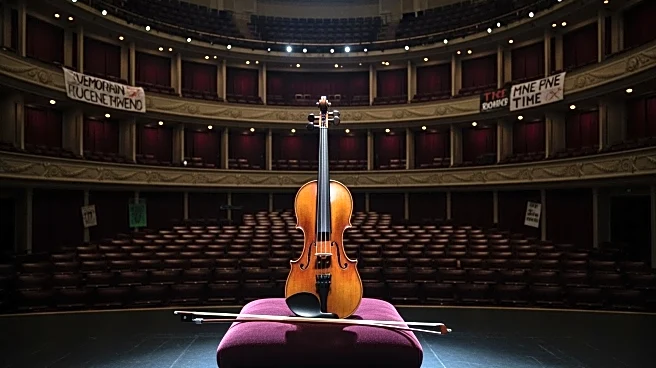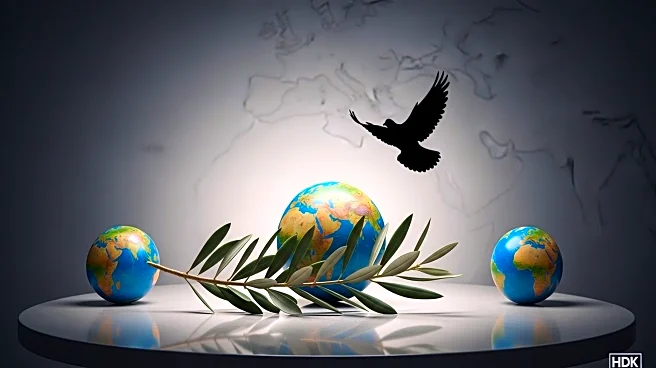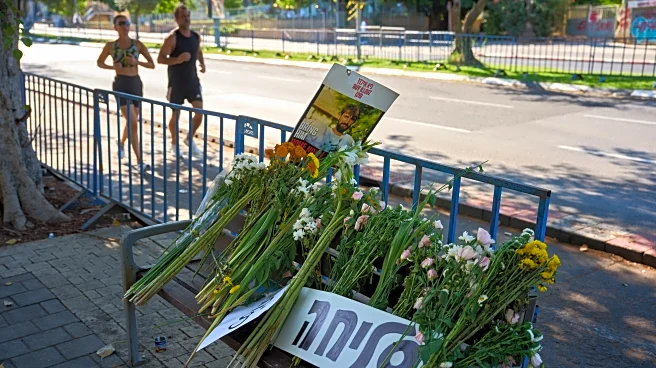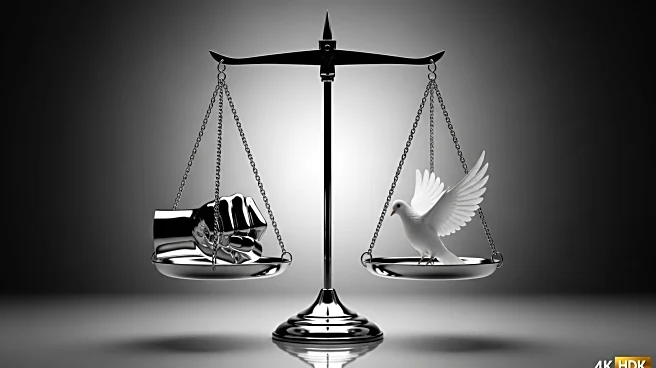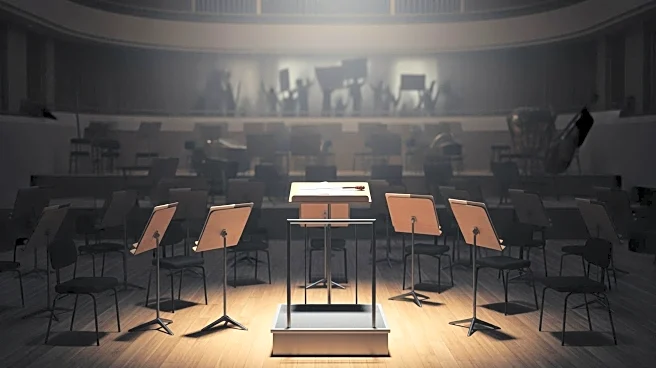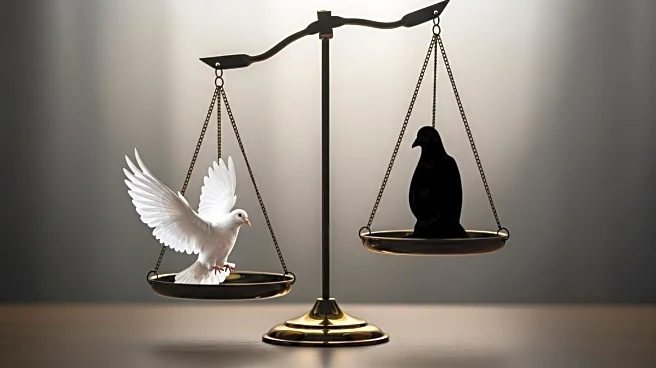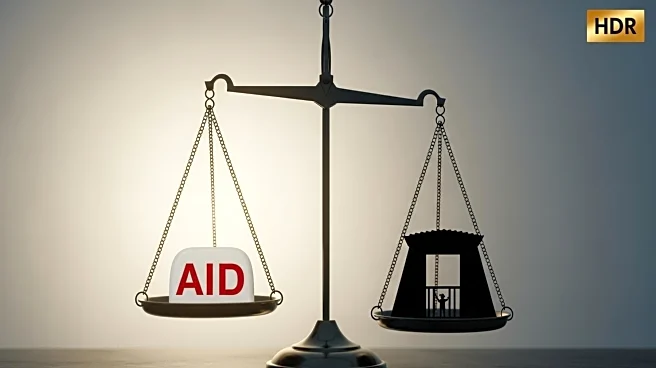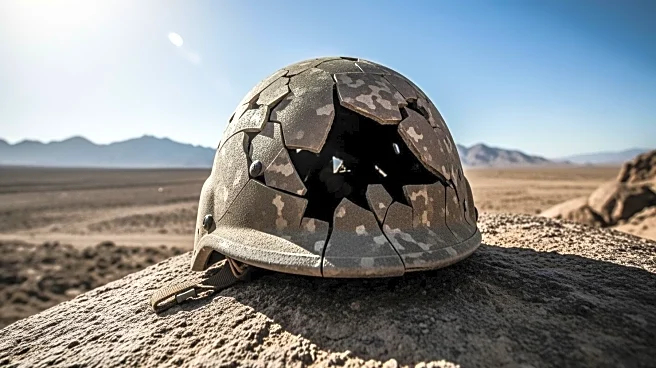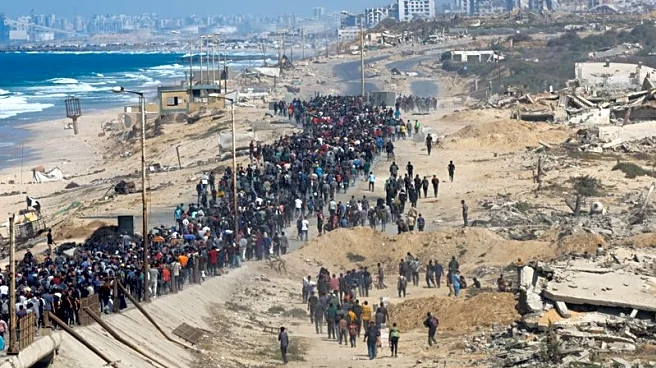What's Happening?
The Israel Philharmonic Orchestra, a longstanding guest at Carnegie Hall, is facing protests during its current concert series. Demonstrators gathered outside Carnegie Hall as the orchestra began its four-night performance, voicing opposition to the Israeli
military's actions in Gaza. The protests are part of a broader movement targeting cultural events involving Israeli artists, following the recent cease-fire agreement between Israel and Hamas. The orchestra's performances, led by music director Lahav Shani, occur amidst heightened tensions and global polarization, as noted by Carnegie Hall's artistic director, Clive Gillinson.
Why It's Important?
The protests against the Israel Philharmonic highlight ongoing international tensions surrounding the Israeli-Palestinian conflict. Cultural events have become focal points for political expression, reflecting broader societal divisions. The demonstrations at Carnegie Hall underscore the impact of geopolitical issues on cultural institutions and their audiences. This situation illustrates the challenges faced by artists and venues in navigating political controversies, potentially affecting public perception and attendance at such events.
What's Next?
As the cease-fire between Israel and Hamas holds, cultural and political stakeholders may continue to face scrutiny and protests. The Israel Philharmonic's performances could prompt further demonstrations, influencing future engagements and collaborations with international venues. Carnegie Hall and similar institutions might need to address security and public relations strategies to manage potential disruptions. The broader implications for cultural diplomacy and international relations remain uncertain, as stakeholders assess the impact of ongoing protests.
Beyond the Headlines
The protests against the Israel Philharmonic raise questions about the role of cultural diplomacy in conflict resolution. As cultural events become platforms for political expression, they may influence public discourse and international perceptions. The intersection of art and politics could lead to shifts in how cultural institutions engage with global issues, potentially fostering dialogue or exacerbating divisions. The long-term effects on cultural exchange and collaboration remain to be seen.
